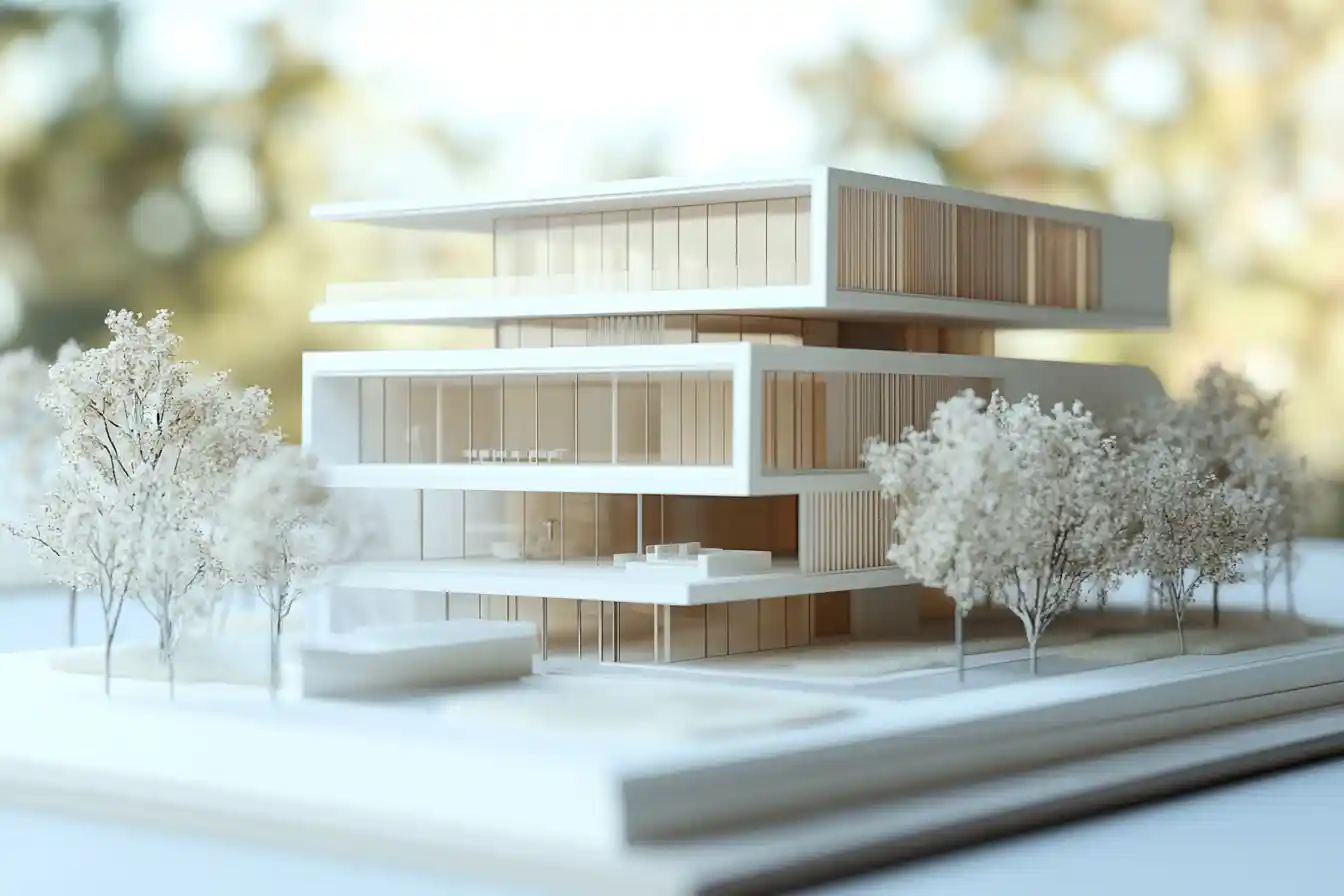Decorating a home is more than just arranging furniture; it’s about creating a space that reflects your personality and style. Whether you’re building from the ground up or remodeling, the process opens up endless possibilities to explore new design horizons. However, narrowing down your preferred style and ideas can be daunting.
That’s why I’ve compiled some top interior design tips to help you transform your home into a stylish haven. From introducing a bit of asymmetry to playing with textures and gradients, these tips can be applied to any room in your house. Let’s dive in and discover how you can add glamour while ensuring your home remains a true reflection of you.

Understanding Your Space
Transforming a home into a haven begins with truly understanding your space. Knowing the layout, lighting, and flow can significantly impact the effectiveness of your decorating efforts.
Assess the Layout
Assessing the layout of a room is the first step in any decorating project. Furniture should be arranged to facilitate movement, often referred to as circulation. Elyse Moody, a kitchen design expert, suggests leaving a 4-foot-wide walkway between larger pieces of furniture and 14-18 inches between smaller items. These guidelines help avoid a crowded feel and ensure comfort. For instance, in living rooms, positioning sofas and chairs to foster conversation while maintaining clear pathways can create a welcoming environment.
Consider Lighting and Flow
Lighting plays a critical role in setting the mood and functionality of any room. There are three types of lighting every room should have: ambient, task, and accent. Ambient lighting provides overall illumination, usually from ceiling fixtures. Task lighting, such as lamps over a kitchen island or reading nook, focuses light on specific areas. Accent lighting highlights features like artwork or architectural details.
A well-lit room feels airy and inviting, enhancing the overall aesthetic. For example, placing a canister uplight or a torchiere in a corner can cast a warm glow, making the space feel larger and more welcoming. Effective lighting, paired with intelligent layout design, ensures optimal flow and comfort in any room.
Understanding your space’s layout and lighting enhances the overall decorating process, making it easier to create a harmonious and functional environment.

Choosing a Color Scheme
Neutral vs. Bold Colors
Selecting between neutral and bold colors sets the tone for your space. Neutrals like white, beige, and gray provide a timeless backdrop. They make rooms feel larger and more open. For example, beige walls in a living room create a calm, inviting atmosphere. Combining neutrals with textures and patterns can add depth without overwhelming the space.
On the flip side, bold colors like navy, emerald, and mustard introduce drama and personality. These shades can make a statement. For instance, an emerald green accent wall in an office adds vibrancy and energy. Using bold colors strategically on one or two walls or in accents, like pillows or rugs, ensures the room doesn’t feel cluttered.
The Psychological Impact of Colors
Colors influence mood and emotions. Blue exudes tranquility and calm, making it ideal for bedrooms. For example, light blue walls in a bedroom promote relaxation. Green symbolizes nature and balance, enhancing focus in home offices; a green desk area can improve productivity.
Conversely, red stimulates excitement and energy, perfect for social spaces like dining rooms. Red dining chairs can boost appetite and conversation. Yellow exudes happiness and warmth, brightening kitchens and playrooms. Light yellow walls in a kitchen create a cheerful environment.
By understanding the psychological effects of colors, you can make informed choices, creating spaces that not only look good but also feel right.

Mixing Textures and Materials
Combining Metals and Woods
Mixing metals and woods creates a sophisticated and dynamic space. Metals like brass, chrome, and stainless steel add a sleek, modern feel, while wood introduces warmth and natural elements. Pairing metal light fixtures with wooden furniture can balance the room. For example, a brass chandelier above a walnut dining table adds elegance and comfort. Varying finishes, such as matte wood with polished metal, enhances the visual appeal. This combination provides contrast, making the room feel well-thought-out.
The Role of Fabrics
Fabrics play a crucial role in adding texture and comfort to a room. Soft textiles like velvet and linen introduce coziness, while more rugged options like burlap add an earthy touch. Mixing these fabrics on furniture and accessories, such as pillows and curtains, enriches the room’s aesthetic. For instance, pairing a linen sofa with velvet throw pillows creates depth. Drapes can also significantly alter a space’s look. Thick, floor-length drapes make a room feel luxurious, while sheer curtains lighten it. Incorporating different fabric types and weights adds layers, making the decor more interesting.
Furniture Selection and Placement
Functional and Aesthetic Considerations
Choosing the right furniture involves balancing functionality and style. Ensuring adequate circulation in a room is vital for comfort. Designers recommend leaving a 4-foot-wide walkway between larger furniture pieces. For smaller pieces, a gap of 14-18 inches between them works well. This spacing prevents the room from feeling crowded and allows for easy movement.
Furniture should match the room’s purpose. For example, in a living room, a sofa and chairs should provide comfortable seating for family and guests, whereas in an office, desks and storage solutions should facilitate productivity. Selecting multi-functional furniture, like a sofa bed or an ottoman with storage, adds versatility to a room.
Creating Conversation Areas
Designing conversation areas enhances social interaction. Arranging furniture in a U-shape or H-shape around a focal point, such as a coffee table, fosters a welcoming atmosphere. A U-shape configuration involves placing a sofa and two chairs facing each other at each end of a coffee table. Alternatively, an H-shape has a sofa directly across from two chairs with a table in the center.
Avoid placing all furniture against the walls. Floating furniture away from the walls often makes the room feel larger and more inviting. This arrangement encourages easier conversation flow and creates a cozy environment. Additionally, incorporating side tables and floor lamps within the conversation area adds functionality and style.

Decorative Touches That Transform Spaces
Decorative Mirrors and Artwork
Mirrors and artwork add depth and personality to any space. Hanging a mirror opposite a window increases natural light and makes a room feel larger. Choose a statement mirror with an ornate frame for a dramatic effect or a simple one to blend seamlessly with existing decor. When it comes to artwork, grouping smaller pieces together in a gallery wall creates a focal point. Opt for pieces with colors that complement your room’s palette to tie everything together.
Plants and Green Elements
Incorporating plants into your decor brings life and freshness to any room. Place large potted plants in corners to fill empty spaces or line smaller plants on shelves for a cohesive look. Choose low-maintenance plants like succulents or snake plants if you’re not confident in your gardening skills. Green elements improve air quality and provide a calming atmosphere. Hanging planters or wall-mounted plant holders add a vertical dimension, making the room feel layered and sophisticated.
Personal Touches and Collectibles
Adding personal touches and collectibles makes your space uniquely yours. Display family photos in various frame styles for an eclectic look. Arrange travel souvenirs or cherished items on open shelves or in glass cabinets. These elements tell a story and add depth to your decor. Use items with sentimental value as conversation starters, making your home not just visually appealing but also meaningful. Mix these pieces with modern decor to balance old and new, creating a cohesive yet personalized space.

Lighting as a Design Element
Layering Light Sources
Layering light sources creates a balanced and inviting atmosphere in any room. Task, ambient, and accent lighting each play crucial roles. Task lighting, such as desk lamps and under-cabinet lights, provides focused illumination for specific activities. Ambient lighting, often achieved through ceiling fixtures or chandeliers, offers overall brightness and sets the room’s mood. Accent lighting, including wall sconces and picture lights, highlights particular areas or objects, adding depth and interest. Using a combination of these light types ensures even distribution and enhances the room’s functionality and aesthetics.
Choosing the Right Fixtures
Choosing the right fixtures impacts the room’s style and feel. Consider factors like the room’s purpose and existing decor. For a modern look, select fixtures with clean lines and minimalistic designs. Chandeliers and pendant lights work well in dining areas and entryways, while recessed lighting is ideal for living rooms and kitchens. In bedrooms and reading nooks, opt for table lamps or floor lamps with adjustable brightness. Ensure the fixtures match the room’s color scheme and overall design.
Natural light also elevates a space. Large windows, skylights, and glass doors maximize brightness and air flow. Window treatments should complement the light fixtures, using lightweight fabrics like cotton and linen to allow light in while maintaining privacy. Leveraging both artificial and natural lighting makes the room vibrant and welcoming.

Maximizing Small Spaces
Clever Storage Solutions
When dealing with limited space, storage solutions become crucial. Under-bed storage boxes utilize the often-overlooked area beneath your bed, providing a spot for off-season clothes or extra linens. Wall-mounted shelves keep items off the floor and make the most of vertical space. Using clear containers or labeled bins keeps items organized in closets and cabinets, making retrieval easier. Multi-tiered hanging organizers in closets can store shoes, accessories, or small clothing items.
Furniture That Doubles as Storage
Selecting multifunctional furniture can transform a small space. Ottomans with hidden storage compartments offer seating and a place to stow blankets, magazines, or remote controls. Beds with built-in drawers provide extra space for clothing or bedding without the need for a separate dresser. Coffee tables with lifting tops reveal storage underneath, perfect for keeping living areas clutter-free. Benches with interior storage create seating and a place to keep items out of sight in entryways or dining areas.
Conclusion
Decorating your home is more than just arranging furniture and picking out colors; it’s about creating a space that reflects your personality and meets your needs. By considering elements like asymmetry, texture, and proper lighting, you can transform any room into a harmonious and inviting environment.
Remember, the right color scheme can set the mood, while a mix of metals and woods adds sophistication. Fabrics like velvet and linen bring texture and comfort, making your space feel cozy and lived-in. Thoughtful furniture placement ensures functionality and flow, creating areas perfect for conversation and relaxation.
Don’t forget the power of decorative mirrors, artwork, and plants to breathe life into your home. And if you’re dealing with limited space, clever storage solutions can make a world of difference. With these tips, you’ll be well on your way to creating a home that’s both stylish and functional.
- apartment decorating tips
- creative storage solutions
- decorating small apartments
- efficient use of space
- home decor ideas
- home decorating tips
- home organization tips
- how to maximize space in small rooms
- interior design ideas
- maximize storage space
- small home design
- small living space solutions
- smart decorating hacks
- space optimization techniques
- space-saving home tips
















Leave a comment